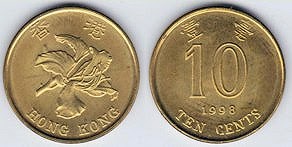
CHAPPIDI ABHIRATH REDDY,
C/O COL GKS REDDY,
Bangladesh Coins
The Taka (Bengali: টাকা, sign: ৳ or Tk, code: BDT) is the currency of Bangladesh. Bangladesh Bank being the central bank of the country controls the issuance of the currency except ৳1 and ৳2 notes, which are the responsibility of the Ministry of Finance of the government of Bangladesh. The most commonly used symbol for the Taka is Tk and ৳, used on receipts while purchasing goods and services. ৳1 is subdivided into 100 poisha.
In Bengali, the word "taka" is also commonly used generically to mean any money, currency, or notes. Thus, colloquially, a person speaking Bengali may use "taka" to refer to money regardless of what currency it is denominated in. The currency sign is encoded in Unicode at U+09F3 ৳bengali currency sign (HTML: ৳).
My Collection of Bangladesh Coins is very meagre, as small coins of Bangladesh are generally not in circulation and hence difficult to obtain
One Paisa - 1974 - Steel coated Aluminium
Five Paise - 1988 - Steel Coated Aluminium
Ten Paise - 1989 - Steel Coated Aluminium
Twenty Five Paise - 1978 - Steel Coated Aluminium
Twenty Five Paise - 1980 - Steel Coated Aluminium
Fifty Paise - 1994 - Steel Coated Aluminium
One Taka - 1992 - Steel Coated Aluminium
One Taka - 1999 - Brass Coated Aluminium
Two Taka - 2008 - Steel Coated Aluminium
Five Taka - 1995 - Steel Coated Aluminium
Hong Kong Coins
The Hong Kong dollar (sign: $; code: HKD; also abbreviated HK$) is the currency of Hong Kong. It is the eighth most traded currency in the world. The Hong Kong dollar is subdivided into 100 cents. The currency is used in both Hong Kong and Macau, as the two regions are of close proximity and their currencies very similar exchange rates.
In 1863, 1 mil, 1 and 10 cent coins were introduced, followed in 1866 by 5 and 20 cents, ½ and 1 dollar. The 1 mil and 1 cent were struck in bronze, with the 1 mil a holed coin. The remaining coins were struck in silver. Production of the 1 mil ended in 1866, whilst that of the ½ and 1 dollar ceased in 1868, with only the ½ dollar (now with the denomination given as 50 cents) resuming production in 1890. Production of all silver coins was suspended in 1905, only briefly resumed in 1932 and 1933 for the production of 5 cent coins.
In 1934, the last 1 cent coins were issued, but the last minting was 1941. These were not issued because of the Second World War. The following year (1935), cupro-nickel 5 and 10 cents were introduced, replaced by nickel in 1937 and nickel-brass between 1948 and 1949. Copper-nickel 50 cents were issued in 1951, these were changed to Nickel-brass in 1977.
In 1960, cupro-nickel 1 dollar coins were introduced, these were reduced in size in 1978. These were followed in 1975 by nickel-brass 20 cents and cupro-nickel 2 dollars (both scallop shaped), and in 1976 by decagonal, cupro-nickel 5 dollars, changed to a round thicker shape in 1980. The 5 cent was last issued in 1979, but last struck in 1988. In 1994, a bimetallic 10 dollar coin was introduced.
Starting in 1993, prior to the establishment of the SAR, coins with Queen Elizabeth II's portrait were gradually withdrawn from circulation. Most of the notes and coins in circulations feature Hong Kong's Bauhinia flower or other symbols. Coins with the Queen's portrait are still legal tender and can be seen, but these are slowly being phased out. However, most still remain in legal tender and are in circulation.
Ten Cents - Queen Elizebeth II - 1965 - Copper
Ten Cents - Queen Elizebeth II - 1978 - Bronze
Ten Cents - Queen Elizebeth II - 1988 - Bronze
Ten Cents - 1998 - Brass
Twenty Cents - Queen Elizebeth II -1980 - Copper
Twenty Cents - 1998 - Nickel
Fifty Cents - Queen Elizebeth II - 1980 - Bronze
One Dollar - Queen Elizebeth II - 1980 - Nickel
One Dollar - 1997 - Nickel
Two Dollars - 1993 - Nickel
Five Dollars - 1993 - Nickel
Ten Dollars - 1994 - Bi-Metallic
Note - Some of the images of coins in my collection, have been taken from the Gallery to the extent available, to save on time & effort involved in photography & editing






















No comments:
Post a Comment